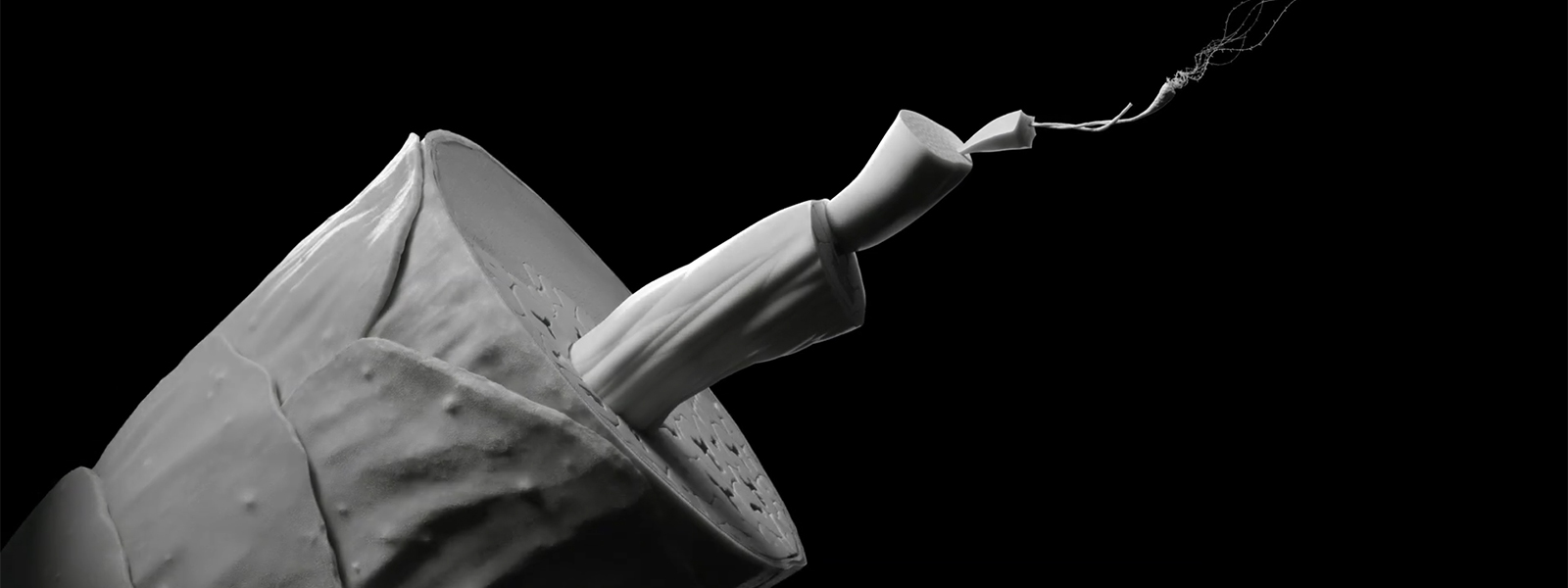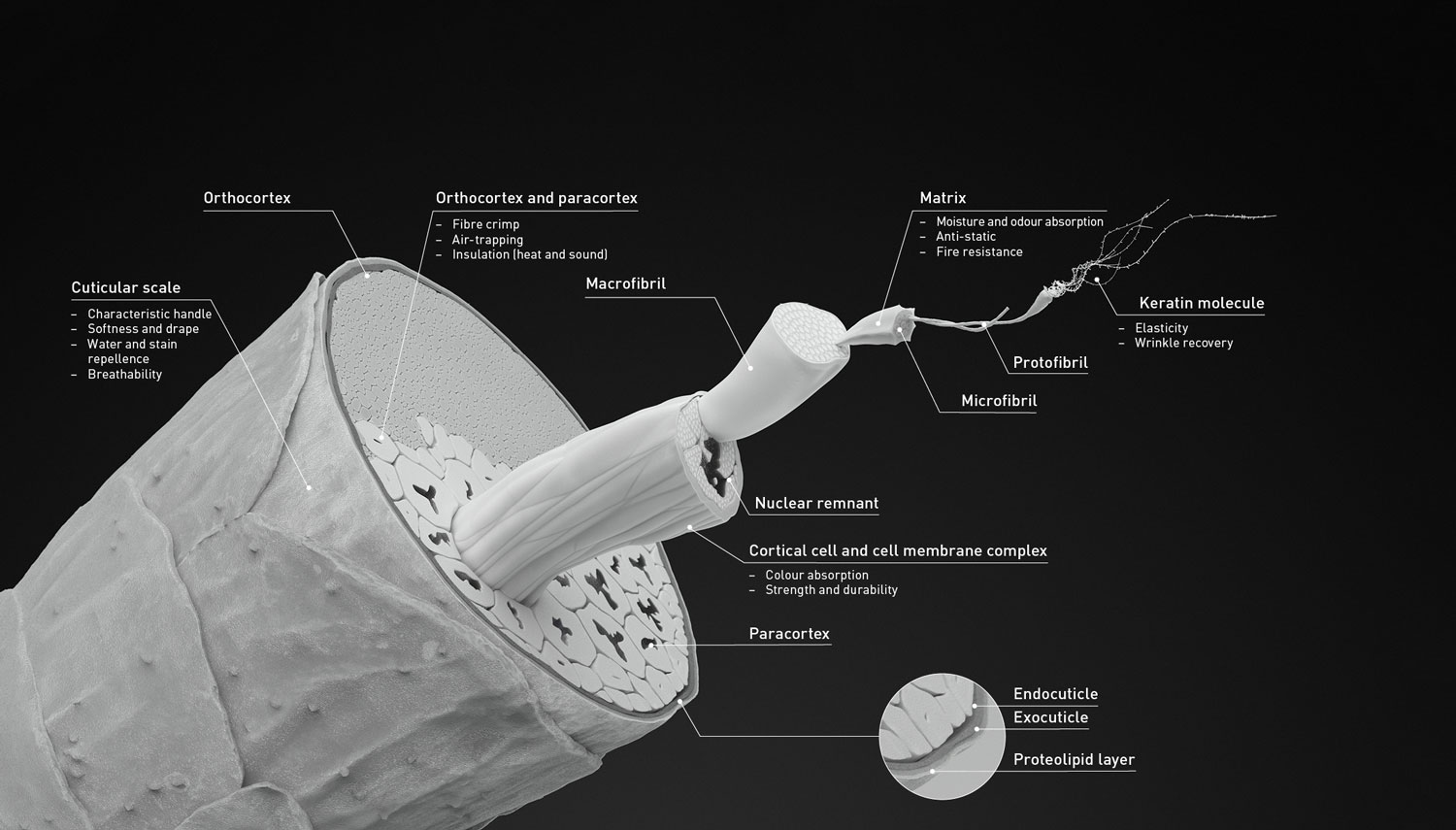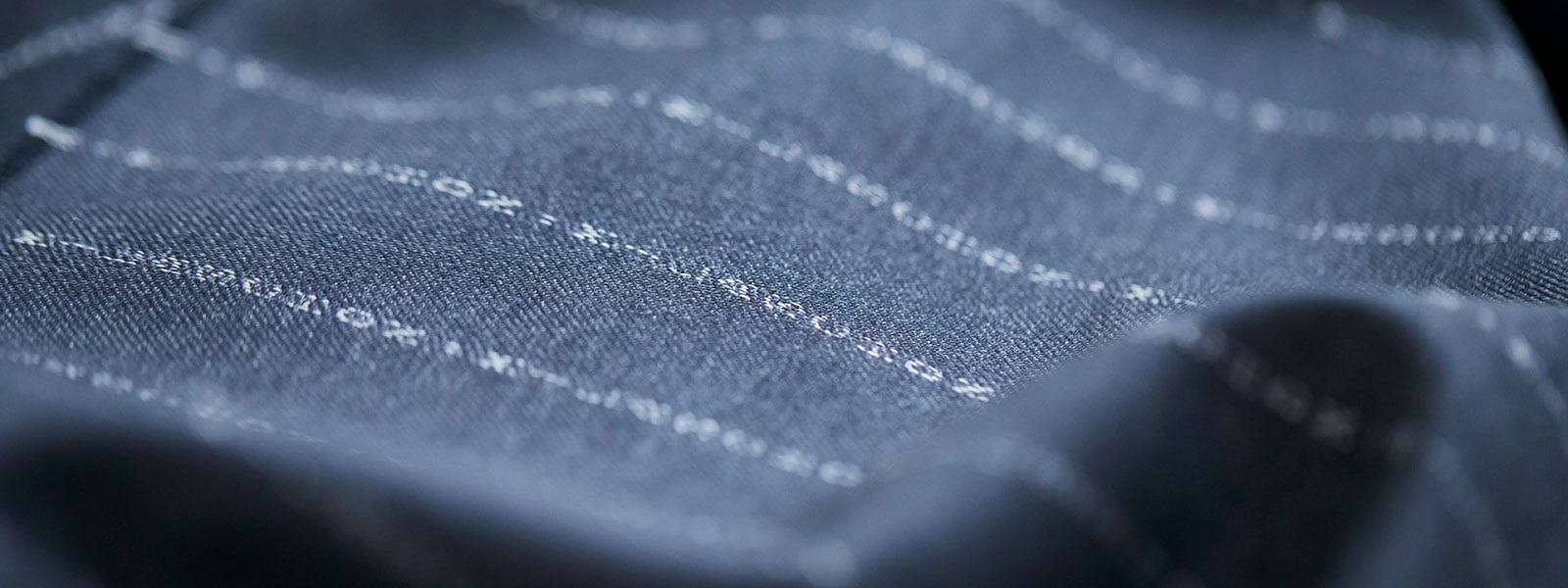Merino wool is famous worldwide for its next-to-skin softness, strength, innate versatility and technical benefits. Merino wool's versatility extends from luxury fashion to high-performance activewear, accessories, homewares and everything in between.
Properties of wool
100% natural
Biodegradable
100% renewable
Wrinkle resistant
Innovative
Naturally breathable

Warm and cool
Odour resistant
Soft on skin
Naturally elastic
Easy to care for
Stain resistant

Wool is the most reused and recycled fibre
Fire resistant
UV resistant
Where does Merino wool get its supernatural benefits?
The complex chemical structure of a wool fibre is what allows it to have so many inherent benefits.

Why is Merino wool so soft?
Why is Merino wool so soft?
Australian Merino wool is the world’s finest and softest wool in the world. Its natural benefits are so great that no other fibre - natural or man-made - can match it.
Wool is good for your skin
Wool is good for your skin
Science has shown that wearing superfine Merino wool significantly improves the severity and symptoms chronic skin conditions, with medical experts also finding wool is not an allergen.
Meet the woolgrowers
Meet the woolgrowers
These are the people who grow your clothes. Their passion, dedication and commitment, woven together to produce the world’s best wool.
